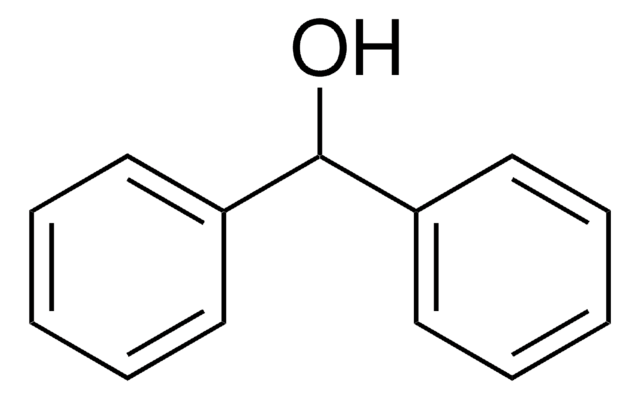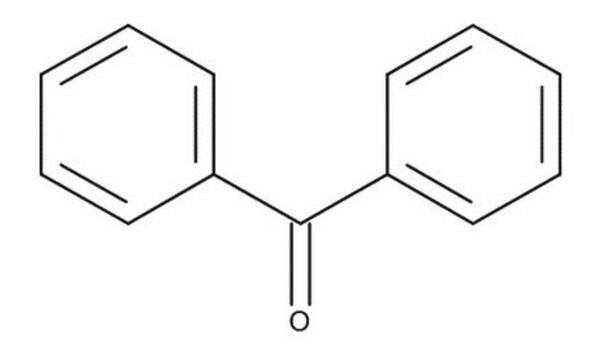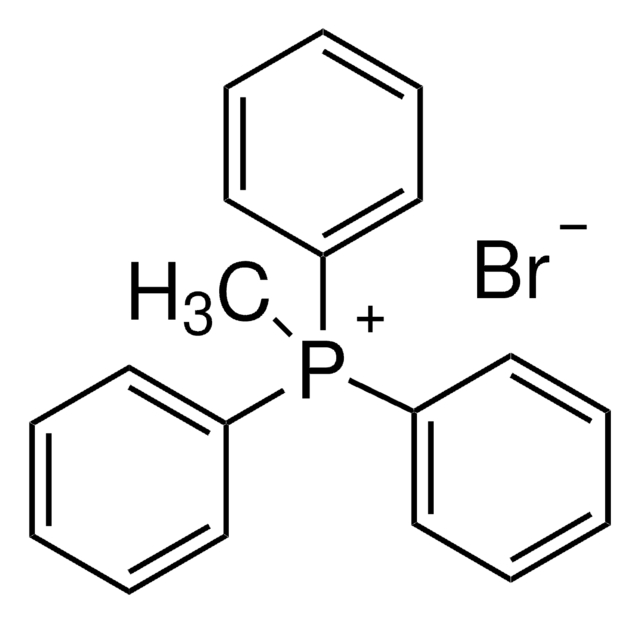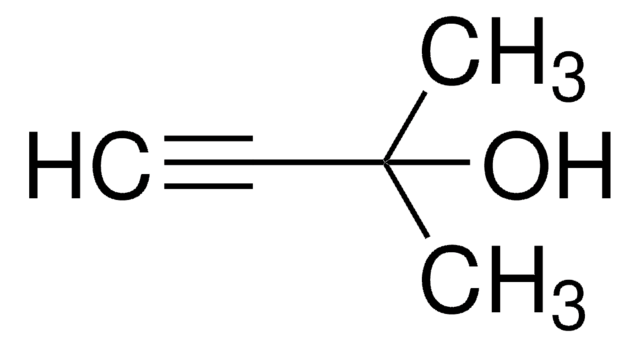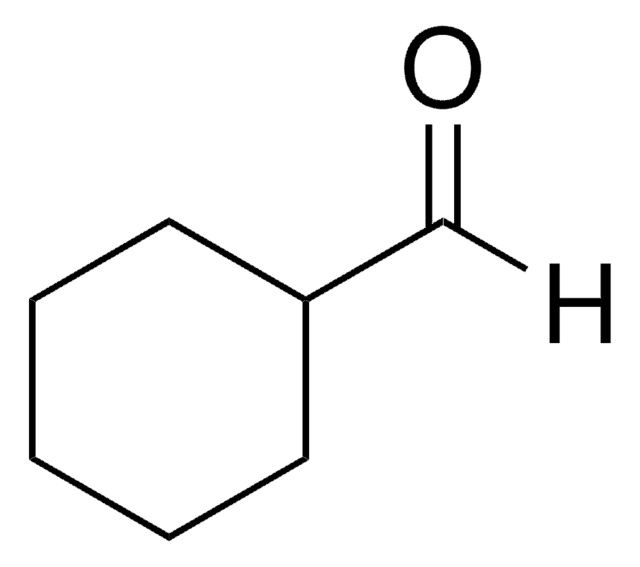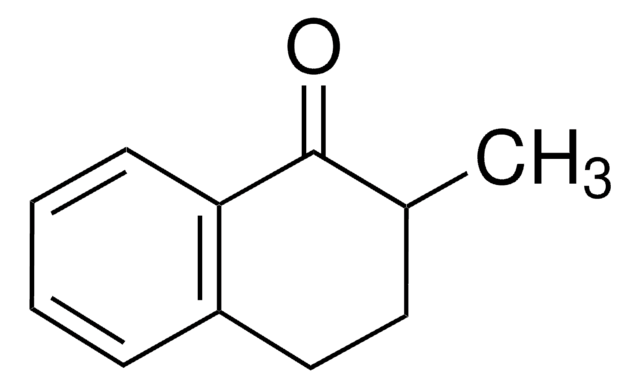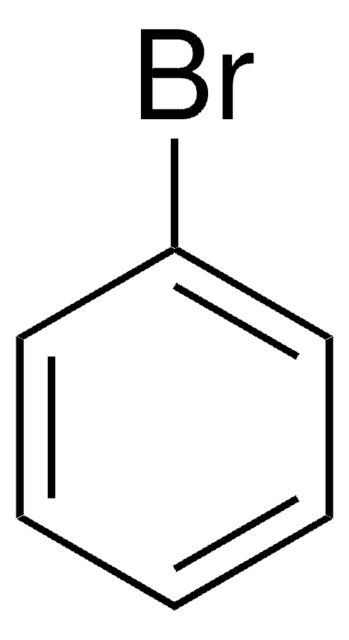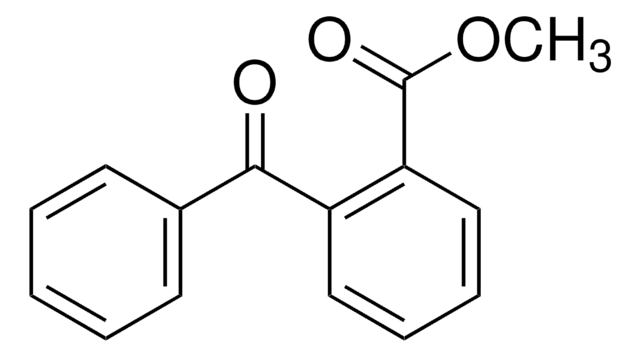B9300
Benzophenone
ReagentPlus®, 99%
Synonym(s):
Diphenyl ketone, Diphenylmethanone, NSC 8077
About This Item
Recommended Products
vapor pressure
1 mmHg ( 108 °C)
Quality Level
product line
ReagentPlus®
Assay
99%
form
flakes
bp
305 °C (lit.)
mp
47-51 °C (lit.)
SMILES string
O=C(C1=CC=CC=C1)C2=CC=CC=C2
InChI
1S/C13H10O/c14-13(11-7-3-1-4-8-11)12-9-5-2-6-10-12/h1-10H
InChI key
RWCCWEUUXYIKHB-UHFFFAOYSA-N
Gene Information
rat ... Ar(24208)
Looking for similar products? Visit Product Comparison Guide
Related Categories
Application
- Photo-crosslinkable bioglue development: A study demonstrated the creation of a surface-independent bioglue using a photo-crosslinkable benzophenone moiety, potentially enhancing medical adhesives for diverse applications (Shi et al., 2024).
- Organic explosive trace analysis: Research highlighted the use of benzophenone for improved preconcentration and analysis of organic explosive traces in aqueous samples, advancing forensic methodologies (Setayeshfar et al., 2024).
- OLEDs blue emitters: A publication introduced bicarbazole-benzophenone based twisted donor-acceptor derivatives as potential blue TADF emitters for OLED applications, showcasing the versatility of benzophenone in electronic devices (Siddiqui et al., 2024).
- Photodynamic antibacterial nonwovens: Research focused on the modification of traditional composite nonwovens with benzophenone to enable stable storage of light absorption transients and enhance photodynamic antibacterial effects, contributing to medical textile innovations (Li et al., 2024).
Legal Information
Signal Word
Danger
Hazard Statements
Precautionary Statements
Hazard Classifications
Aquatic Chronic 3 - Carc. 1B - STOT RE 2 Oral
Target Organs
Liver,Kidney
Storage Class Code
6.1C - Combustible acute toxic Cat.3 / toxic compounds or compounds which causing chronic effects
WGK
WGK 1
Flash Point(F)
280.4 °F - closed cup
Flash Point(C)
138 °C - closed cup
Personal Protective Equipment
Choose from one of the most recent versions:
Certificates of Analysis (COA)
Don't see the Right Version?
If you require a particular version, you can look up a specific certificate by the Lot or Batch number.
Already Own This Product?
Find documentation for the products that you have recently purchased in the Document Library.
Customers Also Viewed
Our team of scientists has experience in all areas of research including Life Science, Material Science, Chemical Synthesis, Chromatography, Analytical and many others.
Contact Technical Service